
A mask is an object normally worn on the face, typically for protection, disguise, performance, or entertainment, and often employed for rituals and rites. Masks have been used since antiquity for both ceremonial and practical purposes, as well as in the performing arts and for entertainment. They are usually worn on the face, although they may also be positioned for effect elsewhere on the wearer's body.
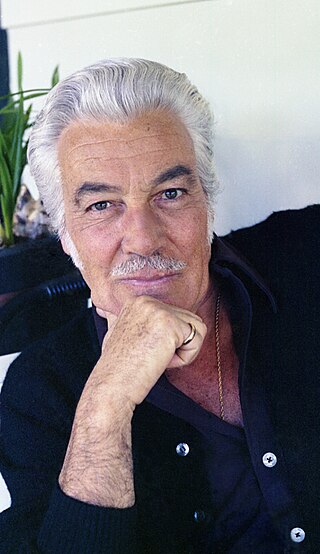
César Julio Romero Jr. was an American actor and activist. He was active in film, radio, and television for almost 60 years. His wide range of screen roles included Latin lovers, historical figures in costume dramas, characters in light domestic comedies, and the Joker on the live action Batman television series of the mid-1960s, which was included in TV Guide's 2013 list of The 60 Nastiest Villains of All Time. He was the first actor to play the character.

A monocle is a type of corrective lens used to correct or enhance the visual perception in only one eye. It consists of a circular lens placed in front of the eye and held in place by the eye socket itself. Often, to avoid losing the monocle, a string or wire is connected to the wearer's clothing at one end and, at the other end, to either a hole in the lens or, more often, a wire ring around its circumference.

A flat cap is a rounded cap with a small stiff brim in front, originating in Northern England. The hat is also known in Ireland as a paddy cap; in Scotland as a bunnet; in Wales as a Dai cap; and in the United States as an English cap or Irish cap. Various other terms exist. Flat caps are usually made of tweed, plain wool, or cotton, while some are made using leather, linen, or corduroy. The inside of the cap is commonly lined for comfort and warmth.
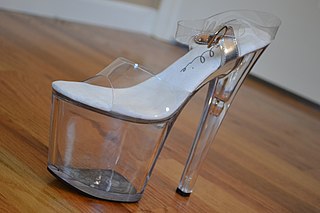
Platform shoes are shoes, boots, or sandals with a thick sole, usually in the range of 5–10 cm (2–4 in). Platform shoes may also be high heels, in which case the heel is raised significantly higher than the ball of the foot. Extreme heights, of both the sole and heel, can be found in fetish footwear such as ballet boots, where the sole may be up to 20 cm (8 in) high and the heels up to 40 cm (16 in) or more. The sole of a platform shoe can have a continuous uniform thickness, have a wedge, a separate block or a stiletto heel. Raising the ankle increases the risk of a sprained ankle.
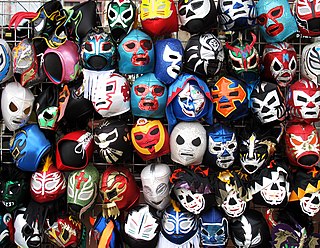
A wrestling mask is a fabric-based mask that some professional wrestlers wear as part of their in-ring persona or gimmick. Professional wrestlers have been using masks as far back as 1915 and they are still widely used today, especially in Lucha Libre in Mexico.

Planet Prince is a 1958 Japanese tokusatsu superhero television series created by Masaru Igami and produced by Senkosha, the series aired on NTV from November 4, 1958 to October 6, 1959, with a total of 49 episodes. It was created to capitalize on the success of Shintoho's Super Giant (Starman) movie series. In fact, the title hero bore a strong resemblance to Super Giant. The pair of Planet Prince theatrical featurettes, adapted from the Senkosha TV series, were produced by Toei Studios and filmed in black and white ToeiScope format.

A duster is a light, loose-fitting, long coat.
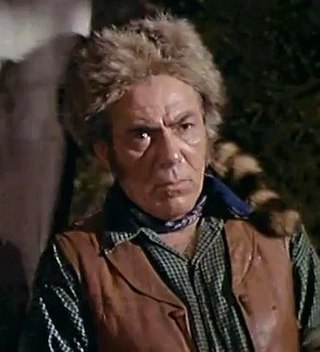
A coonskin cap is a hat fashioned from the skin and fur of a raccoon. The headwear became associated with White Americans occupying lands on the United States borders with Indigenous nations in the late 18th century and the first half of the 19th century. The cap became highly popular among boys in the U.S., Canada, United Kingdom, and Australia in the 1950s. The original cap consisted of the entire skin of the raccoon including its head and tail.
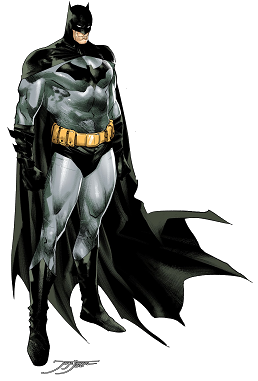
The Batsuit is the costume of DC Comics's fictional superhero Batman, who appears in their American comic books. The suit has been depicted in various artistic iterations, and the stories themselves have described Batman as modifying the details of his costume from time to time. However, it usually consists of a gray or black body suit, the chest emblazoned with a stylized black bat either with or without a yellow ellipse around it, and blue-black accessories: a wide scalloped cape, gloves with a series of fin-like projections, black or blue trunks, boots, and a close-fitting cowl with ear-like projections to suggest a bat's head; and a yellow or gold utility belt containing a variety of gadgets.

The Carnival of Venice is an annual festival held in Venice, Italy, famous throughout the world for its elaborate costumes and masks. The Carnival ends on Shrove Tuesday, which is the day before the start of Lent on Ash Wednesday.
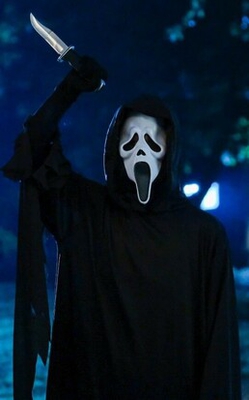
Ghostface is a fictional identity that is adopted by the primary antagonists of the Scream franchise. The figure was originally created by Kevin Williamson, and is primarily mute in person but voiced over the phone by Roger L. Jackson, regardless of who is behind the mask. The disguise has been adopted by various characters in the movies and in the third season of the television series.

Oh, Wicked Wanda! was a British full-colour, satirical adult comic strip, written by Frederic Mullally, and drawn by Ron Embleton. The strip regularly appeared in Penthouse magazine from 1973 to 1980. In the 1960s, Ron Embleton, already a veteran comic book artist, had worked extensively for TV Century 21 comic, illustrating stories based on the television programmes Stingray, Thunderbirds, and Captain Scarlet and the Mysterons, amongst others. For Wicked Wanda Embleton painted the panels in watercolour. Frederic Mullally began his career in the 1940s as a journalist, and by the time of Wicked Wanda he had already become a successful novelist.
Star Trek uniforms are costumes worn by actors portraying personnel of a fictitious Starfleet in various television series and films in the Star Trek science fiction franchise. During the various series, the costume design has often changed to represent different time periods and for reasons of appearance and comfort. Sometimes different styles were deliberately mixed to enhance the sense of time travel or alternative universes.
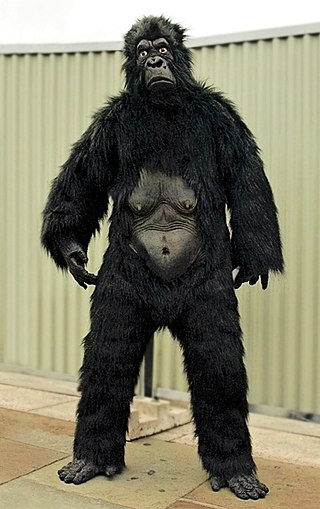
Gorilla suits are a type of creature suit resembling a gorilla. The gorilla suit is a popular Halloween and costume party costume, and is also used as a source of humour, while more realistic suits have been used both to represent real gorillas in film and on stage.
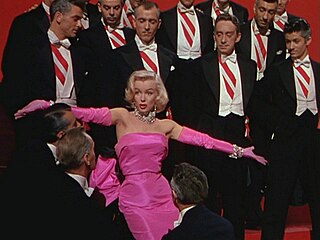
Marilyn Monroe wore a shocking pink dress in the 1953 film Gentlemen Prefer Blondes, directed by Howard Hawks. The dress was created by costume designer William "Billy" Travilla and was used in one of the most famous scenes of the film, which subsequently became the subject of numerous imitations, significantly from Madonna in the music video for her 1985 song "Material Girl".

Each character in commedia dell'arte is distinctly different, and defined by their movement, actions, masks, and costumes. These costumes show their social status and background.

Roger Rabbit is a fictional animated anthropomorphic rabbit. The character first appeared in author Gary K. Wolf's 1981 novel, Who Censored Roger Rabbit? In the book, Roger is second banana in a popular comic strip, "Baby Herman". Roger hires private detective Eddie Valiant to investigate why his employers, the DeGreasy Brothers, have reneged on their promise to give Roger his own strip. When Roger is found murdered in his home, Valiant sets out to look for the killer, with the help of Roger's "doppel".

















